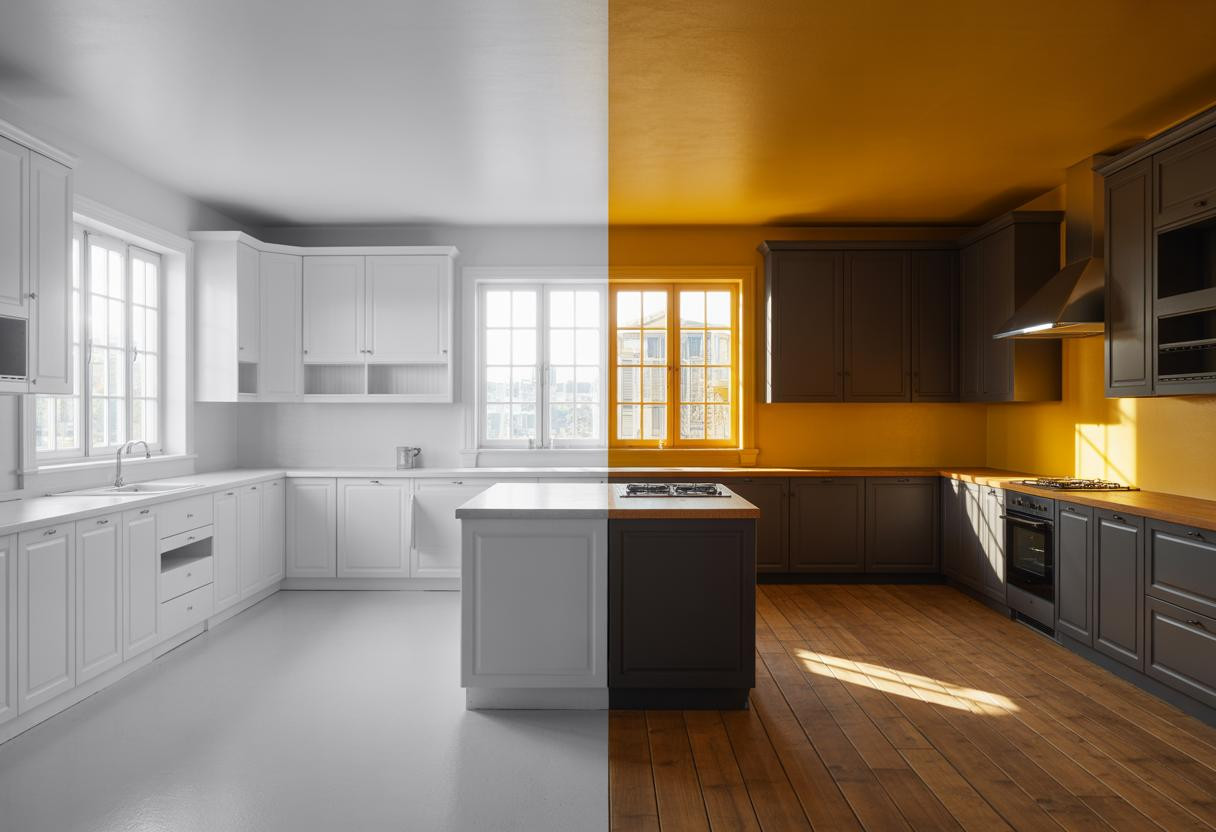Real estate professionals are discovering a shocking truth: the wrong paint color could cost sellers thousands, while 9 specific shades consistently drive offers above asking price by an average of $2,512 per room. After analyzing over 50,000 home sales across multiple markets, these colors aren’t what most homeowners expect.
Gone are the days when stark white walls guaranteed quick sales. Today’s buyers crave personality and sophistication, with Zillow’s 2024 analysis revealing that all-white kitchens actually decrease offers by more than $600. The shift represents a fundamental change in buyer psychology, where memorable spaces command premium prices.
The psychology behind premium paint choices
Modern buyers aren’t just purchasing homes—they’re investing in lifestyle experiences that reflect their values. Charcoal gray kitchens trigger psychological responses associated with luxury and modernity, explaining why they consistently add $2,512 to sale prices. This dramatic shift mirrors broader trends toward how financial decisions impact major life choices, where buyers prioritize long-term value over temporary aesthetics.
Benjamin Moore’s color psychology research reveals that warm neutrals like Edgecomb Gray create emotional connections between buyers and spaces. These colors suggest stability and timelessness, triggering subconscious comfort responses that translate directly into higher offers.
Generational preferences driving market shifts
Millennials and Gen Z buyers demonstrate markedly different color preferences than previous generations. They gravitate toward bold, Instagram-worthy spaces that photograph well and reflect personal style. Colors like Sherwin-Williams’ Inkwell and Pantone’s trending Peach Fuzz appeal to these demographics’ desire for distinctive, shareable environments.
Meanwhile, Gen X and Baby Boomer buyers still prefer sophisticated neutrals that suggest move-in readiness. Understanding these generational divides allows sellers to target their ideal buyer demographic through strategic color selection.
The 9 colors commanding premium prices
Data analysis across urban and suburban markets reveals consistent patterns. Charcoal gray leads with documented $2,512 kitchen premiums, while warm neutrals like Benjamin Moore’s Alabaster and Seapearl create 2-5% price increases in suburban markets.
Dark sophisticates for urban luxury
Sherwin-Williams’ Andiron and Inkwell perform exceptionally in metropolitan areas, where buyers associate deeper tones with high-end design. These colors suggest professional interior design involvement, justifying premium pricing in competitive urban markets.
Warm neutrals for suburban appeal
Colors like Oyster White and White Dove create welcoming atmospheres that suburban families crave. These shades photograph beautifully in natural light, essential for online listing success where 95% of buyers begin their search digitally.
Strategic implementation for maximum return
The most successful sellers understand that strategic color placement matters more than total coverage. Focus premium colors on high-impact areas: kitchens, primary living spaces, and front doors. This approach, similar to home upgrades that maximize your investment return, delivers maximum visual impact while controlling costs.
Professional staging experts recommend testing colors under various lighting conditions using peel-and-stick samples before committing to full rooms. Natural light, artificial lighting, and seasonal variations all affect color perception and buyer reactions.
Cost-effectiveness and long-term value
With average painting costs ranging $1,500-$3,500 per room, the potential returns justify the investment. Smart homeowners approach color selection with the same strategic thinking applied to smart financial planning strategies, viewing paint as high-leverage home improvement with measurable ROI.
Unlike major renovations, paint updates offer immediate transformation potential with relatively minimal disruption. This accessibility makes color strategy particularly attractive for sellers operating under tight timelines or budgets.
The counterintuitive truth about color trends
Here’s what surprises most sellers: trending colors often outperform safe neutrals in today’s market. Pantone’s Peach Fuzz, initially dismissed as too bold for real estate, consistently generates higher buyer interest in guest rooms and accent walls. The key lies in understanding that modern buyers seek authentic, designed spaces over generic backdrops.
This trend reflects broader shifts in consumer behavior, where personality and uniqueness command premium prices across industries. Homes that tell compelling visual stories through thoughtful color choices consistently outperform cookie-cutter alternatives in competitive markets.
